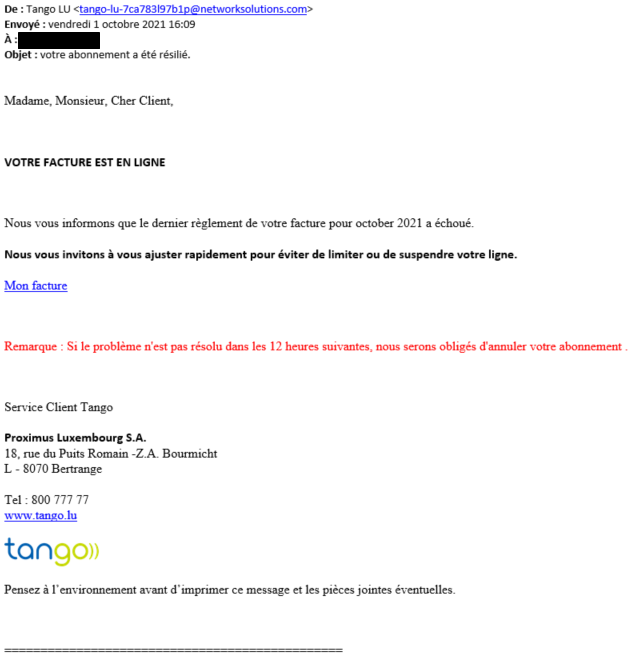You have most likely experienced this situation before: you’re surfing on a well-known website, when suddenly a pop-up window appears. You've won a smartphone at Tango! And all you have to do is "claim your prize". But bad luck, this is a case of phishing.
Yes, it was too good to be true and it's just... a scam. Be extremely vigilant for fraud when surfing online.
1. But actually, what is phishing?
Web criminals (and yes, they exist!) try to obtain your bank account details in different ways. You could say they are literally fishing for information, hence the name "phishing". And they are well-practiced: you receive a message that plays on your emotions and seems to come from a well-known company ... Which obviously inspires trust!
One of the tactics, often used these days, is claiming that you've won a smartphone or a nice trip, and you only have a few minutes to "claim your prize". You must then click on a link and pay an often small sum of money online.
To cover shipping costs, for example. You will then have to enter your bank account details or complete a small survey. And, uh... That's where the trap is!
If, while browsing, you come across a message that you don't trust at all, pass on by. If in doubt, do not succumb to temptation and do not click on the links provided. The wisest thing to do is to close the page!
2. How do you recognize phishing?
Not so long ago, we were only confronted with phishing in the form of suspect e-mails that were full or errors, and therefore easy to identify. They often involved lotteries you supposedly won, or a request for help with an inheritance. Of course, such e-mails still exist, but they are no longer the only type used. Hackers are now even more creative and "professional".
Phishing attempts can appear when you use your applications on your smartphone, or simply when you are surfing, even on trusted sites that everyone goes on.
Recognizing phishing has therefore become much more complicated. The texts are better written and look just like our company's. Even the graphic identity of the brand is adhered to. You must therefore be doubly careful!
Pay attention to the message:
- It is generally pressing in terms of time; you have only a few minutes to respond.
- The message seems to come out of nowhere. For example, you've never entered a competition to try to win the smartphone in question. Or you are not even a customer of the company concerned.
- You are asked for confidential information, such as your credit card number and the CVC code. Even your PIN code!
- The address of the website that sends you the message has nothing to do with the company. Also, be careful as the address can sometimes take a similar form: "tamgo" or "tango.winthis.com".
- The message is addressed to you in a vague manner. It usually starts with "Mr./Mrs.", or with your e-mail address.
EXEMPLE :

→ We see that the email address is suspicious with a series of random letters and numbers ...
We have seen phishing attempts with these addresses:
- tango-lu-8rcyghny00@networksolutions.com
- tango-lu-2g211ctg5@networksolutions.lu
- tango-lu-8rcyghny00@networksolutions.com
- tango-lu-7ca783l97b1p@networksolutions.com
- Any email ending in *@gmx.com
Please note that Tango will always contact you with an email address “noreply t...] @ tango.lu”
→ There is also a time constraint: "If the problem is not resolved within 12 hours ..."
Please note that Tango will never cancel your subscription without sending you multiple reminders.
Tango will never ask you to provide your bank details by email.
3. What should you do if you are a victim of phishing?
Never click on a link in the message. That's enough for criminals to scam you. These links may contain a virus or other malware, which allows them to access your data.
Close your browser. And don't hesitate to perform a security update and a possible virus scan on your device.
Block all pop-ups in your browser to prevent this from happening in the future.
Have you paid already? Block your bank cards quickly via SIX Payment Services: +352 49 10 10.